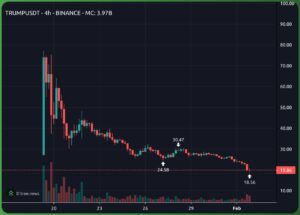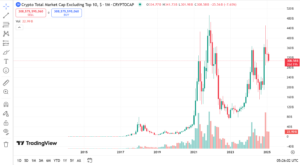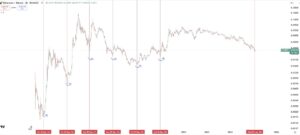
Every year, like clockwork, the crypto market experiences sudden dips or even sharp crashes that send investors into a frenzy. With Bitcoin, Ethereum, and altcoins feeling the burn, the community inevitably scrambles for explanations. One familiar theory often pops up: “It’s because of the Chinese New Year!” 🎊 But is this annual narrative valid, or is it just another myth to justify market volatility?
The Chinese New Year Effect
The Chinese New Year, also known as the Lunar New Year, is a major holiday celebrated by millions worldwide, particularly in China and across Asia. For context, this holiday isn’t just about fireworks and dragon dances; it involves family reunions, travel, and significant spending. Many families prepare for the festivities by liquidating assets to cover expenses, gifts, and other traditional obligations.
Crypto enthusiasts argue that this asset liquidation extends to cryptocurrencies, especially since China has historically been a significant player in the global crypto market. The idea is simple: investors in Asia sell their holdings, causing an increase in sell pressure and, ultimately, a drop in prices.
Does the Data Support This?
A quick glance at past years reveals that the market does, indeed, often see turbulence in January or February. However, attributing this solely to the Chinese New Year may be an oversimplification. Here’s why:
- Global Market Trends: Cryptocurrencies are traded globally, and while China and other Asian countries play a significant role, they’re not the sole movers of the market. Broader economic trends, regulatory news, or even whale movements can trigger market fluctuations during this time.
- Regulatory Concerns: Historically, China’s government has imposed strict regulations on crypto trading and mining. Market dips around this time could also coincide with new policy announcements or enforcement actions, creating the illusion of a holiday effect.
- Tax Deadlines in Other Regions: January marks the beginning of tax season for many countries. Investors may sell off assets to cover tax obligations or adjust their portfolios, contributing to sell pressure independent of the Chinese New Year.
- Psychological Narratives: The “Chinese New Year crash” has become something of a self-fulfilling prophecy. Traders anticipating a sell-off may preemptively dump their holdings, amplifying the downward trend.
A Convenient Scapegoat?
Blaming the Chinese New Year for market crashes has become a convenient narrative, but it ignores the complexity of crypto markets. Volatility is baked into the DNA of cryptocurrencies, and trying to pinpoint a single cause for every crash oversimplifies a highly dynamic ecosystem.
That being said, cultural and economic events can and do influence markets—but they’re just one piece of a much larger puzzle.
What Should Investors Do?
Instead of buying into seasonal hype or panic, here are some practical tips for navigating the crypto market:
- Stick to Your Strategy: Whether you’re a hodler or a swing trader, let your strategy guide you instead of reacting to rumors.
- Diversify Your Portfolio: Crypto is risky; diversifying your investments across different asset classes can help cushion against volatility.
- Stay Informed: Keep an eye on global events, not just localized holidays, to understand what might be driving market movements.
- Zoom Out: Remember, short-term volatility is part of the game. If you believe in crypto’s long-term potential, don’t let a single market dip shake your confidence.
Final Thoughts
As we approach the next Lunar New Year, expect to hear the familiar refrain blaming market turbulence on holiday sell-offs. While there’s likely some truth to increased liquidity needs during this time, it’s far from the whole story. Instead of getting caught up in the noise, take a step back and view the market’s movements with a wider lens. After all, crypto’s highs and lows are never as simple as a calendar date.







Leave a Comment